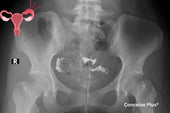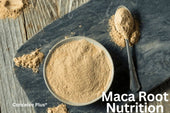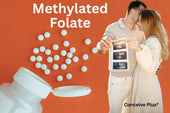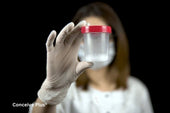Can Precum Be White and What Does It Mean?
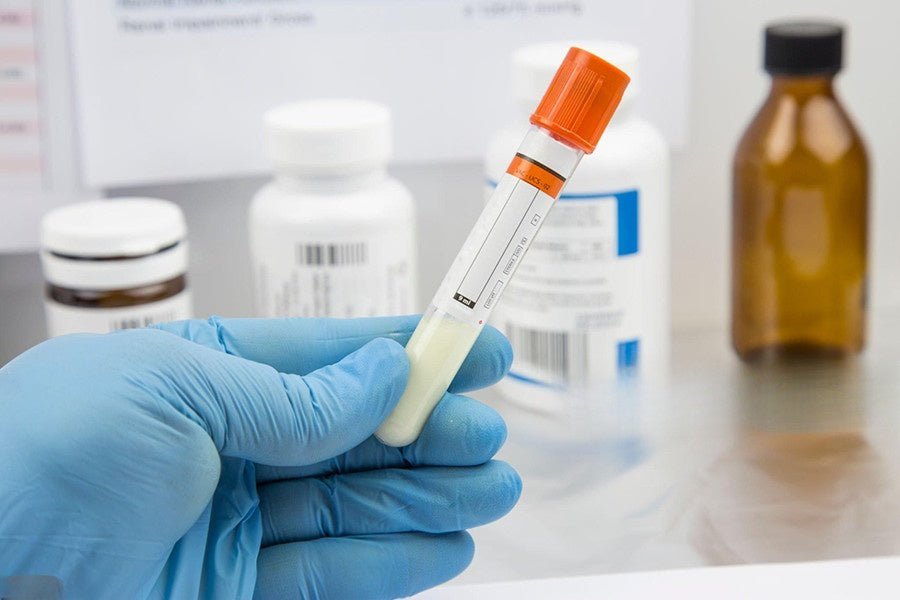
For anyone who has ever wondered, can precum be white, the answer is nuanced, and understanding why pre‑ejaculate looks the way it does can remove a lot of unnecessary anxiety. Pre‑ejaculate, often nicknamed pre‑cum, pre‑sperm, or Cowper’s fluid, is a clear to slightly cloudy liquid released from the penis during sexual arousal before full ejaculation. Produced mainly by the paired bulbourethral glands and, to a smaller extent, the glands of Littre, this fluid serves multiple roles: it neutralizes residual acidity in the urethra, provides lubrication to ease penetration, and may carry a small number of sperm left over from previous ejaculations. Because it appears before orgasm, many people ask what color is precum or what color is pre cum, especially when they notice subtle shifts in shade from one occasion to another [1].
Biochemistry Behind the Shade Spectrum
The baseline composition of pre‑ejaculate is water, electrolytes, simple sugars such as galactose and glucose, and mucoproteins that give the fluid its slippery texture. These ingredients are inherently translucent, which explains why the default precum color is usually described as crystal clear. However, minute variations in protein concentration, pH, and the presence of exfoliated epithelial cells can lend the fluid a faint opalescent quality that some observers describe as milky. Consequently, asking is precum white or what colour is precum is understandable because under bathroom lighting the fluid may look pale rather than transparent [2].
Factors That Can Make Pre‑Ejaculate Appear White
A slight white hue typically reflects harmless protein density or a few dormant sperm cells mixing into the discharge. Recent ejaculation is one of the most common reasons for this admixture; sperm lingering in the urethral bulb may be swept forward by the next wave of Cowper’s fluid. Mild dehydration concentrates the solutes and can accentuate cloudiness. Additionally, the angle of observation, the background surface, and even smartphone camera flash can influence perception of the color of precum. In other words, what colour is pre ejaculation in the bright morning light may not match its appearance in dim evening conditions.
When White Turns to a Warning Sign
Although whitish tinge is typically benign, a change to thick, chunky, or foul‑smelling discharge merits medical evaluation. Conditions such as urethritis, prostatitis, or sexually transmitted infections can alter the usual translucence. Purulent fluid tinged yellow or green, streaked with blood, or accompanied by burning warrants laboratory culture and urinalysis. Remember that self‑diagnosing solely on the basis of precum colour is unreliable; professional assessment is the gold standard when symptoms arise [3].
Comparing Pre‑Ejaculate to Semen
Because semen is generally opaque and pearly, people often conflate the two fluids and wonder what color is pre sperm. The key difference is that semen contains a high concentration of spermatozoa suspended in seminal vesicle secretions rich in fructose and prostaglandins, giving ejaculate its thicker, whiter appearance. By contrast, pure Cowper’s fluid remains watery and mostly clear. Still, the border between them is not always crisp; small amounts of semen can leak prior to orgasm, creating the creamy shade that sparks the question what color is pre nut among curious partners.
Cultural Myths and Misconceptions
Popular media frequently portrays pre‑ejaculate as either invisible or identical to semen, which fuels confusion about what colour is pre ejaculation in real life. Some online forums claim that cloudy fluid is proof of heightened fertility, while others insist that completely clear discharge means no sperm are present. Scientific studies, however, demonstrate that sperm counts in pre‑cum vary widely and correlate more with time since last ejaculation than with visible translucence. Therefore, decisions about contraception should not rely on perceived color differences.
The Role of Diet, Lifestyle, and Health
Lifestyle choices can subtly influence precum colour. High intake of carotenoid‑rich foods such as carrots and sweet potatoes can tint bodily secretions slightly yellow, though this effect is more pronounced in sweat and sebum than in Cowper’s fluid. Smoking and chronic alcohol use may thicken mucous secretions overall, potentially giving pre‑ejaculate a cloudy look. Good hydration, balanced nutrition, and regular exercise support normal gland function, ensuring that what color is pre cum remains within the typical spectrum from clear to faintly white [4].
Laboratory Assessment of Pre‑Ejaculate
Clinicians rarely analyze pre‑ejaculate in routine practice, yet specialized fertility clinics sometimes collect samples to measure pH, fructose concentration, and presence of leukocytes. Under microscopy, normal Cowper’s fluid appears mostly acellular, with an occasional sloughed epithelial cell and, depending on timing, a handful of motile or immotile sperm. If inflammatory cells dominate the slide, the sample is flagged for infection. Such testing provides objective answers to questions about color of precum and clarifies whether white or cloudy appearance is pathological.
Practical Implications for Contraception and Fertility
The possibility of sperm in pre‑ejaculate means the withdrawal method carries a measurable risk of pregnancy. While the percentage of sperm‑positive samples varies across studies, research consistently finds at least some viable sperm in a minority of men’s pre‑cum. Consequently, color alone cannot guarantee sterility; whether the fluid appears clear or milky, barrier protection remains advisable for those avoiding conception. Conversely, couples trying to conceive sometimes speculate that a whiter discharge indicates higher sperm content, yet there is no reliable correlation between visible hue and sperm count.
Psychological Impact and Communication
Anxiety about genital secretions is common, and the uncertainty surrounding what color is pre sperm can exacerbate embarrassment during intimate moments. Open dialogue with partners about normal bodily fluids can reduce shame and foster healthier sexual experiences. Health educators emphasize using anatomically accurate terms and evidence‑based information, replacing slang like pre nut with clear explanations about glandular physiology. Knowing that variations in precum colour are usually benign helps individuals focus on pleasure rather than worry [5].
Addressing Frequently Asked Questions
People often ask, what is the colour of precum supposed to be? The consensus is that normal Cowper’s fluid ranges from completely clear to slightly cloudy. Another frequent query, is precum white every time, deserves a nuanced response: it can be, but it is just as likely to be colorless depending on factors discussed earlier. Others inquire, what colour is pre ejaculation when a man is very aroused? Heightened blood flow and increased glandular output can make the fluid appear more voluminous, which may scatter light and create a paler look, yet the biochemical composition remains unchanged.
Hormonal Fluctuations Across the Lifespan
Endocrine rhythms shape the quantity and appearance of every genital fluid, and pre‑ejaculate is no exception. Testosterone primes the bulbourethral glands, but the cast of prolactin, cortisol, and thyroid hormones alters viscosity and hue. During periods of intense stress, elevated cortisol can transiently reduce glandular output, making the small volume that does emerge appear denser and therefore paler. Conversely, men undergoing testosterone replacement therapy often notice an increase in flow accompanied by a clearer sheen as protein concentration is diluted by larger fluid volume.
Impact of Common Medications
Pharmacological agents can also change how pre‑ejaculate looks. Antihistamines, for example, dry mucous membranes throughout the body, sometimes yielding a scant, thicker discharge that users perceive as off‑white. Selective serotonin reuptake inhibitors, prescribed for depression and anxiety, have been documented to decrease sexual secretions; when less fluid is produced, minor particulate matter becomes more visible, giving an illusion of milkiness. On the other hand, alpha‑blockers used for prostate enlargement may enhance secretion volume, leading to a more translucent presentation that reassures patients who previously worried about cloudiness.
Age‑Related Variations and Long‑Term Health
As men age, histological changes occur within the bulbourethral glands, and these can influence both the quantity and color of their secretions. Younger adults typically produce larger volumes of clear fluid because glandular ducts are wide and unobstructed. After middle age, gradual fibrosis can narrow the channels, reducing flow and allowing proteins to concentrate, which sometimes shifts the shade toward white. Regular aerobic exercise and adequate hydration help preserve ductal elasticity, demonstrating that lifestyle can counterbalance ageing effects. Nevertheless, any abrupt color change warrants evaluation, regardless of age [6].
Recognizing When to Consult a Healthcare Provider
Any persistent shift toward thick, yellow, green, or bloody discharge, especially when paired with burning, itching, or pelvic discomfort, should prompt medical review. Rapid diagnostic tests for sexually transmitted infections and urinary pathogens are straightforward and can quickly rule out serious causes. Early treatment not only resolves symptoms but also prevents potential complications like urethral scarring or fertility issues.
The Bottom Line
Variability in the appearance of pre‑ejaculate is normal, and asking what color is pre cum or can precum be white reflects healthy curiosity about sexual health. Under typical circumstances, pre‑cum is clear; however, slight cloudiness arising from protein content, residual sperm, or lighting conditions is within the range of normal. Color alone is not a reliable indicator of infection, fertility, or hormonal status. Maintaining good hydration, practicing safe sex, and seeking medical advice when significant changes occur are the best strategies for peace of mind.
References
- Killick SR, Leary C, Trussell J, Guthrie KA. Sperm content of pre-ejaculatory fluid. Hum Fertil (Camb). 2011 Mar;14(1):48-52. doi: 10.3109/14647273.2010.520798. Epub 2010 Dec 15. PMID: 21155689; PMCID: PMC3564677.
- Kovavisarach E, Lorthanawanich S, Muangsamran P. Presence of Sperm in Pre-Ejaculatory Fluid of Healthy Males. J Med Assoc Thai. 2016 Feb;99 Suppl 2:S38-41. PMID: 27266214.
- Patel J, Nelson AL, Nguyen BT. Low to non-existent sperm content of pre-ejaculate in perfect-use contraceptive withdrawal, a pilot study. Contraception. 2024 Dec;140:110555. doi: 10.1016/j.contraception.2024.110555. Epub 2024 Aug 8. PMID: 39122085.
- Zhan S, An G, Gan J, Du H, Fu X, Wang C, Mao Y, Kang X, Liu J, Liu H. Comparison of fresh testicular sperm aspiration and use of either thawed pre-frozen sperm or oocyte freezing: impact on cumulative live birth rates for couples experiencing ejaculation failure. Hum Reprod. 2025 Feb 1;40(2):199-209. doi: 10.1093/humrep/deae290. PMID: 39740242; PMCID: PMC11788192.
- Drechsel KCE, Broer SL, van Breda HMK, Stoutjesdijk FS, van Dulmen-den Broeder E, Beishuizen A, Wallace WH, Körholz D, Mauz-Körholz C, Hasenclever D, Cepelova M, Uyttebroeck A, Ronceray L, Twisk JWR, Kaspers GJL, Veening MA. Semen analysis and reproductive hormones in boys with classical Hodgkin lymphoma treated according to the EuroNet-PHL-C2 protocol. Hum Reprod. 2024 Nov 1;39(11):2411-2422. doi: 10.1093/humrep/deae204. PMID: 39256932; PMCID: PMC11532607.
- Sunder M, Leslie SW. Semen Analysis. [Updated 2022 Oct 24]. In: StatPearls [Internet]. Treasure Island (FL): StatPearls Publishing; 2025 Jan-. Available from: https://www.ncbi.nlm.nih.gov/books/NBK564369/
Buy sperm count supplements for the best products to increase sperm count for men. Shop natural sperm count enhancers and quality vitamins to improve sperm count. Conceive Plus Men's Fertility products are the best products to increase sperm count and sperm volume - trusted by Doctors and fertility experts since 2008!








